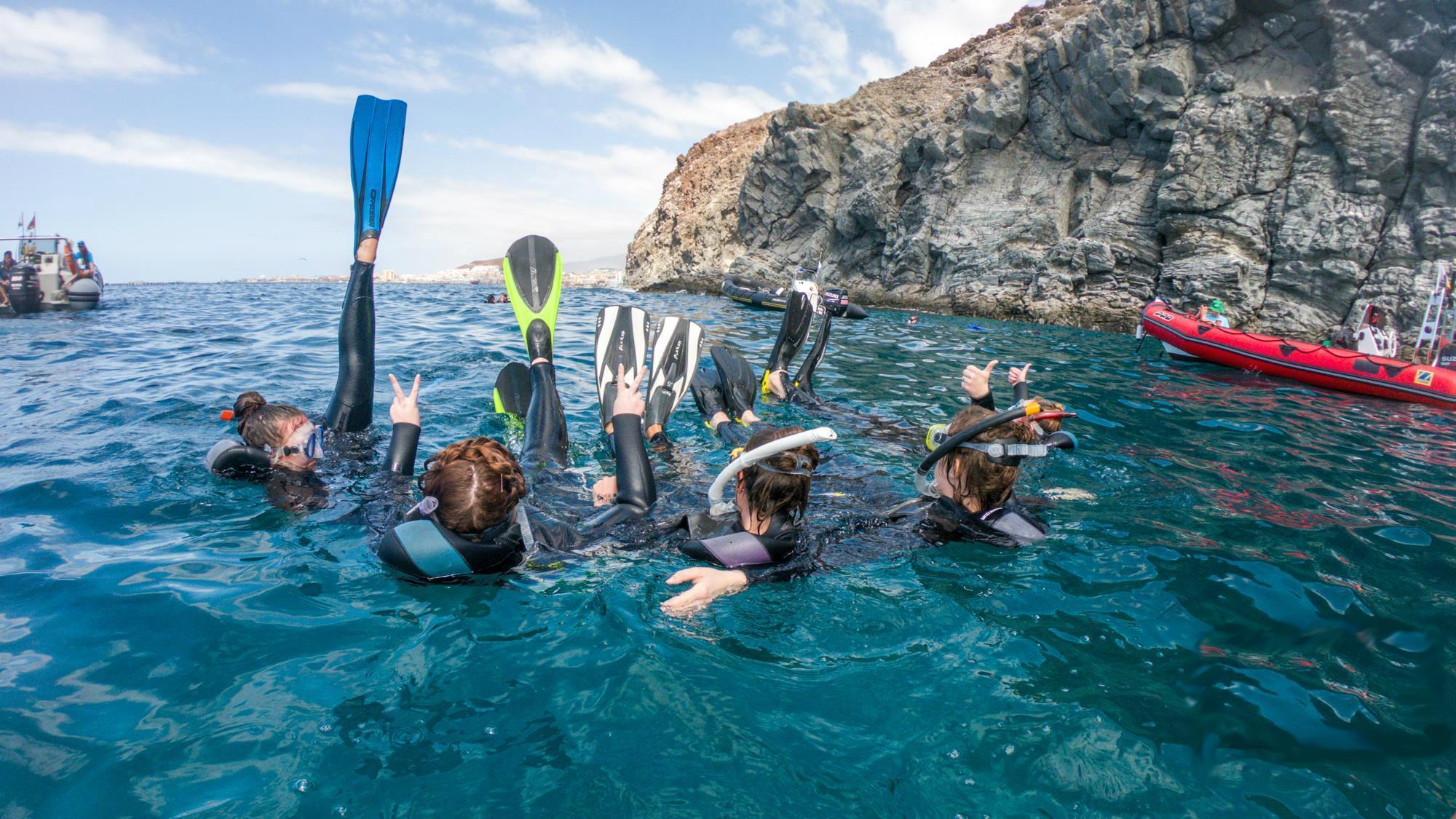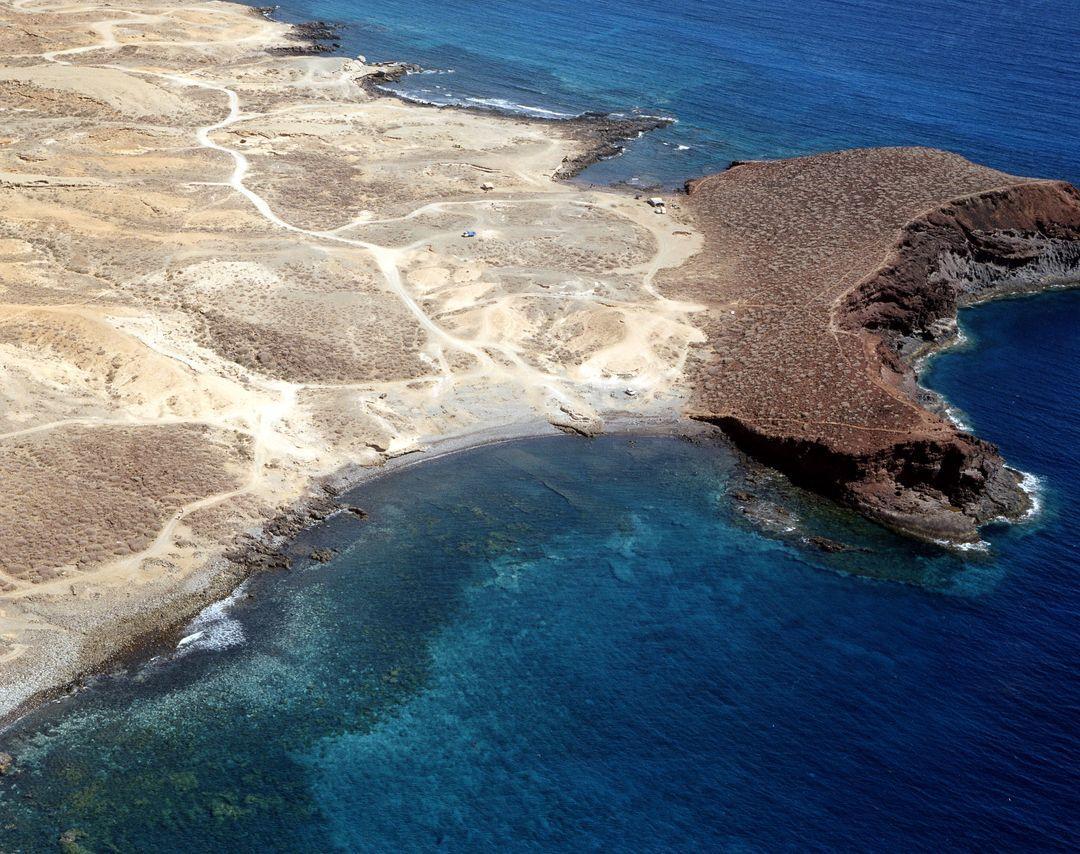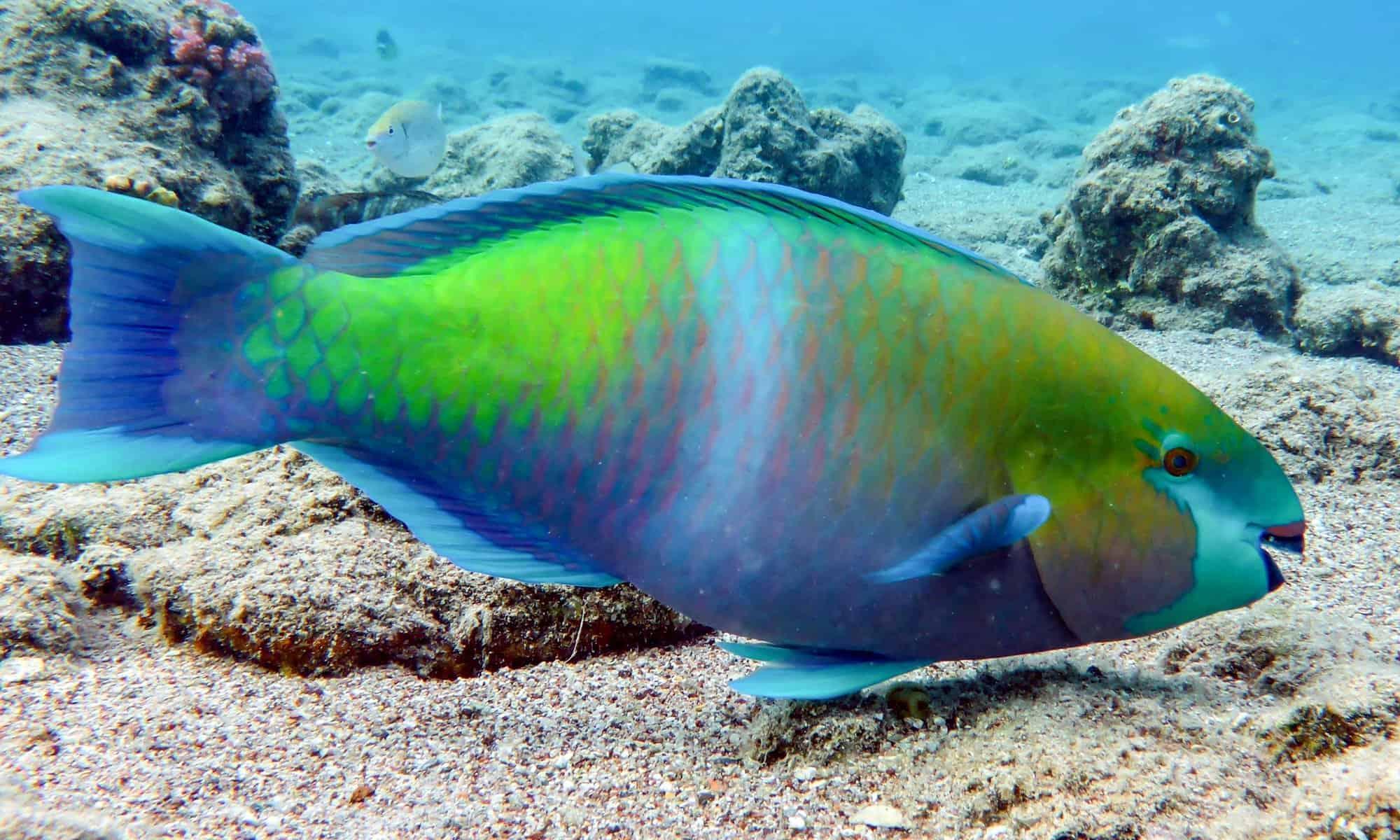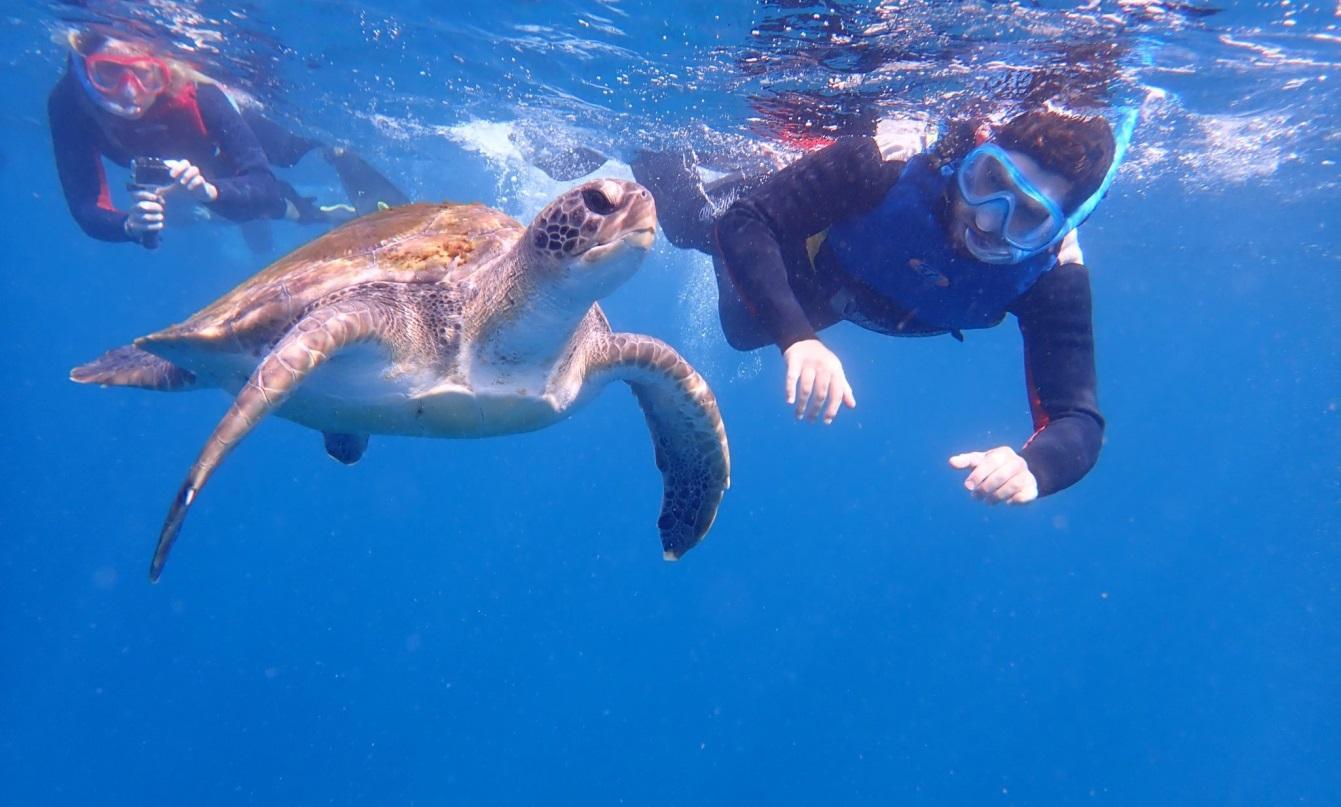Introduction
Have you ever wondered what lies beneath the crystal-clear waters surrounding Tenerife’s picturesque coastline?
With its warm, inviting waters and diverse marine life, Tenerife is regarded as one of the world’s top snorkeling destinations. It offers an incredible opportunity to explore the island’s underwater world and observe its unique flora and fauna up close.
Whether you are a seasoned snorkeler or a beginner who wants to experience this thrilling activity for the first time, Tenerife offers something for everyone regarding snorkeling. This guide will introduce you to everything you need to know before embarking on your undersea adventure in Tenerife. So please put on your diving mask, and let’s dive into the beauty that awaits you off the coast of Tenerife!

Top Snorkel Spots in Tenerife
Whether you’re a seasoned snorkeler or a beginner, we’ve compiled a list of the best spots for snorkeling and kayaking in Tenerife to help you start your aquatic journey. Each location is unique, from secret coves to protected bays, and offers an unforgettable experience. Let’s explore the top snorkel spots in Tenerife!
El Puertito
El Puertito, also known as Turtle Bay in Costa Adeje, is situated southwest of the island. The marine life in this area is moderate, with abundant sea turtles, making it a suitable destination for snorkeling and kayaking in Tenerife. Visitors can arrange a tour/minibus through their hotel or pick up flyers about available snorkeling and kayaking tours in Tenerife.
Sea turtles can be spotted in El Puertito, with some growing considerably. The loggerhead species can reach between 3 and 4 feet long and often surface to the warmer waters to relax after feeding and breathing. Despite being accustomed to tourists and snorkelers, it’s essential to refrain from touching these magnificent creatures and maintain a respectful distance.
Aside from the turtles, snorkeling in Tenerife can enjoy sightings of stingrays, bull rays, butterfly rays, and schools of fish swimming around the rocky ocean floor. Tenerife can be rocky; water shoes and snorkel rash are recommended for protection. The water close to the shore is shallow, so it’s crucial to be mindful of movements during snorkeling in Tenerife. Wearing snorkel fins can make it effortless to propel oneself without excessive swimming movements during snorkeling in Tenerife.
Playa de Las Arenas
In the northeastern part of Tenerife, Playa de Las Arenas is a bay surrounded by hotels and restaurants. It’s an ideal spot if you’re looking to spend a leisurely day on the beach, snorkeling and kayaking on the Tenerife bay, soaking up the sun, and enjoying a meal afterward. Remember that this isn’t a tropical paradise but a casual day out on Tenerife with other tourists.
As mentioned, expect to find something other than colorful coral in Tenerife. Playa de Las Arenas consists of a rocky ocean floor, with only a few fish swimming around, and a fantastic spot for calm snorkeling or kayaking in Tenerife. However, this place is unique because of its stunning scenery showcasing the island’s volcanic history and natural beauty. There are also plenty of schools of fish to observe, and the bay has many shallow areas while snorkeling on Tenerife’s bay. However, it’s essential to be mindful of the currents and wear protective gear while snorkeling in Tenerife.
Playa de Las Arenas is a fun tourist spot perfect for a relaxing family day out. Snorkeling here is average, but it pairs well with a day on the beach. Palm trees add to the appeal. If the weather is favorable, it’s an ideal location for Snorkeling with kids.
Playa de Las Vistas
About a 15-minute car drive south of El Puertito, Playa de Las Vistas is a large, white beach between Playa de Las Americas and Los Cristianos. While it’s a popular spot among tourists, the beach is large and a good destination for snorkeling and kayaking in Tenerife, so there’s usually enough space for everyone, whether snorkeling, kayaking, or any other leisure activity.
Playa de Las Vistas is an excellent beach where snorkeling can be a fun part of the day. While you won’t visit this beach exclusively for Snorkeling, it’s a beautiful place to relax with friends or family, snorkel with turtles, observe some fish between activities, or sunbathe. Compared to Playa de Las Arenas, there’s more sand here, although there are still plenty of rocky areas to explore. The water is clear and home to a variety of fish species.
Another thing to note about this beach is its many facilities, such as restaurants, bars, and beach chairs. You can even shop if you get bored with snorkeling on the Tenerife beach. The area is quite spacious as well. One potential downside is the presence of jellyfish, which will be flagged to notify beachgoers. Playa de Las Vistas is a fun and bustling spot with plenty to do, including regular snorkeling.
Punta de Teno
Punta de Teno is situated in the northwest region of Tenerife and provides a stunning representation of the island’s true beauty. While many visit Tenerife for its vibrant party scene and sunny weather, Punta de Teno offers a breathtaking view of Los Gigantes, showcasing its natural beauty. If you plan to visit, exploring the nature reserve is also recommended, as it is equally stunning. Check the ocean’s condition before planning your Snorkeling trip; sometimes, the water can be rough. Plan your snorkeling in Tenerife. The hiking trail offers spectacular views that are perfect for photography enthusiasts. You may even spot an octopus if you’re lucky enough while snorkeling and go on snorkeling with turtles in Tenerife. There are rocky pools to swim in, but they can be dangerous, so joining a tour is strongly advised. Some provide boats or kayaks and have scheduled swimming and snorkeling stops. Additionally, a boat tour can provide fantastic photo opportunities you want to take advantage of.
Abades
Abades is another Tenerife snorkeling destination worth considering in the southeastern part of Tenerife. It is not particularly large, but it is usually less crowded than other popular spots, making it an ideal location to escape the hustle and bustle of tourists for a day (though it is becoming more popular). Additionally, there are several restaurants in the vicinity.
Many people regard Abades as the “jewel” of Tenerife’s snorkeling sites. It is a superb location for snorkeling and kayaking in Tenerife. It provides a fantastic opportunity to see a wide variety of fish species and the possibility of observing an octopus similar to Punta de Teno. The entire area is more vibrant than the previous locations, including the ocean floor.
Abades is about a 30-minute drive from Playa de Las Americas, but it can also be reached by bus, which takes over an hour.

Plam Mar Wall
The Palm Mar Wall is situated in the northeastern portion of the Atlantic. It is a vertical wall that descends approximately 24 meters deep and consists of three levels, each inhabited by various aquatic wildlife and an exciting destination for snorkeling in Tenerife. The best way to explore this location is to enter the water at the Los Cristianos cliffs and swim alongside the wall. Additionally, take advantage of the chance to snorkel in the Palm Mar half-underwater cave, an exciting spot to explore.
Compared to other locations in the Canary Islands, Palm Mar’s aquatic wildlife is more diverse. While snorkeling in Tenerife’s Plam Mar Wall, You can expect to encounter a wide range of fish, including devilfish or pelagic fish, snorkeling with green turtles, and possibly stingrays near the bottom. Additionally, you may spot Atlantic rays, croakers, and angel sharks.
Types of Marine Life You Can Spot During Your Snorkeling Experience
Tenerife is one of the best destinations for snorkeling in Europe. The clear and warm waters around the island are home to various marine life. Have you ever wondered what wonderful marine life lies beneath the surface of the sea? Snorkeling in Tenerife could be a fantastic opportunity to discover an underwater world with diverse and beautiful species. Here are some of the types of marine life you can spot during your snorkeling experience in Tenerife:
Green sea Turtles
The Green sea turtle is a type of sea turtle that belongs to the Cheloniidae family. This species can be found in tropical and subtropical waters worldwide, including the Pacific, Atlantic, and Indian Oceans, and excitedly while snorkeling and kayaking in Tenerife.
Green sea turtles can reach a length of 1.5 meters (5 feet), and the average weight of mature individuals is 68–190 kg (150–419 lb). Their streamlined, tear-drop-shaped shells and four flippers, adapted for swimming in the ocean, make them easily recognizable. Although they mainly eat seagrasses and algae, which makes them herbivores, they may also consume jellyfish, sponges, and other marine invertebrates.
Stingrays
Stingrays are fish species with flattened bodies and long, whip-like tails armed with venomous spines, which are seen while on a snorkel in Tenerife. They can range in size from just a few inches to several feet. Generally, they are harmless to humans but can become dangerous if they feel threatened or cornered due to their venomous spines, which can cause severe injury or death. Therefore, giving them adequate space and avoiding physical contact when encountering while snorkeling in Tenerife is crucial.
Moreover, stingrays play a significant role as predators in their ecosystems and feed on small fish, mollusks, and crustaceans. They are also a food source for larger predators like sharks; some humans hunt them for their skin and meat. Sadly, many stingray species are threatened or endangered due to habitat loss and overfishing.
Octopuses
Another fantastic creature found while on a snorkel in Tenerife is Octopuses, a type of cephalopod; they are intriguing marine creatures with eight arms with suction cups and are famous for their exceptional talent, camouflage, and imitating their surroundings. They can be found in numerous regions across Tenerife, particularly in Tenerife’s shallow and warm waters. It is essential to look out for them while snorkeling in Tenerife carefully.
Aside from their impressive physical characteristics, octopuses are intelligent creatures with giant brains among invertebrates. They can solve problems and navigate mazes and puzzles to obtain food. Their eyesight is also exceptional, enabling them to identify shapes, colors, and patterns.
As carnivores, octopuses feed on various sea animals, such as crabs, shrimp, and fish. More giant creatures, such as whales and sharks, also hunt them.
Barracuda
Barracuda is a predatory fish species that inhabit tropical and subtropical oceans, making it very easy to see in Tenerife while snorkeling and kayaking. They are recognized for their elongated and slim body shape, as well as their sharp teeth and robust jaws. Barracudas possess exceptional swimming abilities and can swim up to 35 miles per hour.
Their diet comprises smaller fish, squid, and crustaceans, and they hunt opportunistically, using their sharp senses to detect prey. Barracudas sometimes group to pursue and utilize their agility and speed to corner prey before attacking.
Although barracudas do not commonly attack humans, there have been some incidents where they have attacked swimmers and divers. These attacks are often attributed to mistaken identity, as barracudas may confuse shiny objects or reflective surfaces with prey. Therefore, it is crucial to exercise caution when swimming in areas where you see barracudas while snorkeling in Tenerife.
Parrotfish
Parrotfish are a species of colorful marine fish located in tropical and subtropical waters and can come across while snorkeling in Tenerife. They derive their name from their beak-like mouth, which scraps algae and coral from rocks and reefs.
These fish play a crucial role in coral reefs’ health by preventing algae growth. They achieve this by feeding on the algae, which competes with coral for space and sunlight. Apart from algae, parrotfish also consume small crustaceans and invertebrates.
Parrotfish possess a unique ability to change their color and shape as they mature. They are beautiful creatures to look out for a while snorkeling in Tenerife. As juveniles, they have distinct coloration and patterns compared to when they become adults. Some species can even change their sex, beginning as females and later as males.
In some parts of the world, parrotfish are an essential food source for humans. However, overfishing and habitat loss have led to a decline in their populations. Conservation efforts are being made to safeguard parrotfish and their coral reef ecosystems.

Blue-fin Damselfish
The Blue-fin Damselfish, which can be found in coral reefs and rocky areas while snorkeling or kayaking in Tenerife, Blue-fin Damselfish is a small and colorful fish. They get their name from their blue fins and yellow or orange bodies.
These fish are known for being territorial and can be hostile toward other fish that enter their territory. They employ different methods to protect their space, including chasing and biting.
The Blue-fin Damselfish is omnivorous and eats a variety of tiny organisms, such as plankton, algae, and small crustaceans.
Within the coral reef ecosystem, these fish are crucial in regulating the population of algae and other tiny organisms. They also serve as prey for larger fish and marine animals.
Although not generally consumed by humans, the Blue-fin Damselfish is famous for aquarium enthusiasts due to its appealing appearance and low maintenance care. So, watch out for Blue-fin Damsel while on a Tenerife snorkel.
Angel Sharks
Angel sharks are marine fish species residing in the shallow waters surrounding Tenerife. They possess flat bodies and broad pectoral fins, which aid them in gliding along the ocean floor, and they tend to conceal themselves with their surroundings.
As carnivores, Angel sharks prey on an array of fish and invertebrates, such as crustaceans, mollusks, and small sharks, utilizing their flat bodies and camouflage to capture their targets stealthily.
Despite their name, Angel sharks are not actual sharks; they belong to the ray family. They reproduce through internal egg fertilization, and their offspring are born fully developed and capable of swimming.
Angel sharks face a significant threat from commercial fishing, and their populations have drastically dwindled in many parts of the world.
Therefore, Seeing Angel Sharks while snorkeling in Tenerife is a fantastic view. Consequently, they are presently classified as a vulnerable species, and measures are being taken to conserve and safeguard their populations.
Best time to go snorkeling in Tenerife
The best climate conditions for snorkeling in Tenerife depend on the water temperature, visibility, and wind conditions. Generally, it is best to go snorkeling in Tenerife when the water is warm and clear with minimal waves or currents. The optimal time for snorkeling and kayaking in Tenerife is between May and October when the water is warmer and calmer. During these months, the water temperature averages between 21°C to 25°C (70°F to 77°F), which is ideal for extended exploration without getting too cold while in the water. However, it’s essential to check weather forecasts before heading out, as strong winds or rains may negatively impact water clarity, making it challenging to enjoy your snorkeling excursion. Remember that there could be a different climate depending on the island you’re staying on. All the details can be found on this website.
Tips for Safe & enjoyable snorkeling experiences
Tenerife offers some of the most breathtaking snorkeling opportunities for those seeking adventure and marine exploration. But who exactly can enjoy these activities? Want to go on snorkeling with turtles in Tenerife? And what excursions are on offer?
Snorkeling is an activity that can be enjoyed by almost anyone, regardless of age or experience level. Children as young as eight years old can participate in supervised tours that take place in shallow waters close to shore. You can join snorkeling in Tenerife if you can swim comfortably and have basic swimming skills. However, it is essential to note that certain health conditions, such as heart or lung problems, may make snorkeling a risky undertaking.
If you’re keen to explore Tenerife’s aquatic world up close, there are many excursions available that promise unforgettable experiences:
Swimming with Dolphins: One of the most popular excursions in Tenerife is swimming with dolphins. Prices start from €25 per person and usually last around two hours.
 Snorkeling with a Turtle
Snorkeling with a Turtle
Turtle Watching: Another popular option is turtle watching in their natural habitat while snorkeling or kayaking in Tenerife. This excursion typically costs around €39 and takes about 3 hours.
Snorkeling Alongside Sea Creatures: For those who want a more immersive underwater experience than simply observing sea creatures from afar, there are options for snorkeling with turtles in Tenerife and other fantastic sea creatures. Prices start from around €40 and depend on the type and duration of excursion chosen.
It’s worth noting that some excursions include multiple activities, like dolphin swimming, snorkeling with turtles, and other sightseeing opportunities, to create a complete package at a reduced price.
Regardless of which excursion you choose, all tour guides provide high-quality equipment for your day out on the water – wetsuits and fins at a minimum – alongside thorough training for beginners, so don’t worry if it’s your first time – you’ll be taken step-by-step through how the equipment works and reasonable expectations.
With opportunity abounding in Tenerife’s waters adapted to multiple skill sets and great value packages available, everyone can unlock their inner Jacques Cousteau just off this island’s shores!
Snorkeling in Tenerife is fun and exhilarating, but taking precautions to ensure your safety while exploring the underwater world is essential. Here are some tips for a safe and enjoyable snorkeling experience in Tenerife:
Wear suitable snorkeling gear: Your mask, snorkel, and fins should fit properly. Well-fitted, comfortable equipment enhances your experience and prevents discomfort or injury while on Tenerife snorkel.
Practice your skills: Before diving deep into snorkeling or Kayaking in Tenerife, It is advisable to practice in shallow water before attempting deeper waters. Ensure you clear your mask and snorkel of water and use your fins effectively.
Swim with a partner: Snorkeling in Tenerife with a partner or group is safer, particularly in unfamiliar waters. This way, you can watch each other and seek assistance if necessary.
Respect marine life: Refrain from touching or disturbing marine life and avoid standing on coral or rocks while snorkeling in Tenerife. Be considerate not to harm the environment or disrupt the natural habitat of marine animals.
Check the weather conditions: Before snorkeling or kayaking in Tenerife, verify the weather forecast and avoid going out if the conditions are unsuitable. Solid currents or rough seas can pose risks while snorkeling in Tenerife.
Stay hydrated: Snorkeling and kayaking in Tenerife can be tiring, so drink plenty of water before and after your trip. It’s also a good idea to bring a water bottle with you.
Follow the regulations: Follow any rules or restrictions in the snorkeling area, such as limits on where to snorkel in Tenerife or anchor boats. This will help preserve the environment and ensure everyone has a safe and enjoyable experience.
Equipment needed for Snorkeling in Tenerife.
Suppose you plan to go snorkeling in Tenerife. Here are the essential items you’ll need:
Firstly, While snorkeling in Tenerife, a snorkel is crucial equipment that enables you to breathe air from the surface while submerging your face. When choosing a snorkel, you must ensure it’s comfortable and fits your face correctly.
Secondly, a mask it is the basic element of snorkeling that covers your eyes and nose, allowing you to see underwater while on your snorkeling adventure in Tenerife selecting a mask that fits snugly on your face and doesn’t leak.
Thirdly, fins are necessary to move through the water with less effort. Since fins come in different sizes, choosing the right size is crucial for comfort and ease of use.
Fourthly, Tenerife’s water temperature can be chilly, so wearing a wetsuit is highly recommended to keep you warm while snorkeling in Tenerife. The thickness of the wetsuit you choose should depend on your personal preference and the water temperature.
Moreover, dive boots protect your feet when walking on rocky surfaces and prevent blisters from fins rubbing against your skin.
It’s also essential to protect your skin from the sun’s harmful rays by wearing sunscreen and a rash guard.
Lastly, a snorkeling vest provides buoyancy and keeps you afloat while snorkeling in Tenerife water.
Most tour operators in Tenerife who offer snorkeling experiences typically furnish their customers with all the required equipment. Nevertheless, it is essential to verify with the tour company beforehand what equipment is incorporated in the package and if any additional equipment is obtainable for rent. Selecting a trustworthy and skilled tour company to guarantee safe and high-quality equipment is also advisable while planning for snorkeling in Tenerife. With the correct gear and assistance from a tour company, snorkeling in Tenerife can be an enjoyable and remarkable experience for everyone involved. You can also rent or purchase this equipment from Tenerife’s local dive shops or water sports centers. However, checking the equipment’s condition and ensuring it fits well before use is essential to guarantee a safe and comfortable Tenerife snorkeling experience.
Conclusion
Snorkeling in Tenerife is an exhilarating experience. The crystal-clear waters offer visibility up to 30m, with brilliant marine life around every corner. From vibrantly colored fish to starfish and even more incredible creatures living in the surrounding coral reefs, snorkeling in Tenerife is undoubtedly a fantastic thing. With a wide variety of snorkeling tours available in Tenerife, complete with experienced guides and all the necessary gear, a plunge into the depths of Tenerife offers an unforgettable experience.
Nothing can compare to witnessing the beauty of Tenerife’s underwater world firsthand. While snorkeling or kayaking in Tenerife, snorkelers can explore fantastic rock formations and see some species native to these waters. Whether one is a novice or experienced diver, it pays off to leap beneath the waves for a truly awe-inspiring adventure!
Exploring beneath the ocean surface has tremendous importance from an ecological perspective. In today’s world, maintaining healthy habitats for marine life is crucial – and conservation begins when we develop personal connections between visitors and the wonders of nature found below the water’s surface. That is why everybody should take advantage of this opportunity and make memories that will last forever while helping to preserve our shared resources at sea.

